#Diego Palacio
Explore tagged Tumblr posts
Text
Celtian - Maleficio De Sangre - Live Streaming with Songs and Thongs

#Breedsblood1#Live Streaming#Breedsblood#Video Reaction#Alberto Clemente#Songs and Thongs#Sharlene Combrinck#South-Africa#Harry (Mr Songs)#Sharlene (Ms Thongs)#Symphonic folk metal#Spain#Diego Palacio#Xana Lavey#Guillermo Soloaga#Gonzalo Gomez#Metal#Female Vocal Lead#Female Vocalist#Symphonic Metal#Harry Combrinck#Celtian Group#Spanish symphonic folk metal#folk metal#live streaming on youtube#Female Growler#Reaction Video#Secretos de Amor y Muerte Album#Maleficio De Sangre#music video reaction
0 notes
Text
Fotografía del interior del Palacio de Bellas Artes, Ciudad de México, en 1938.
En la foto se muestra el famoso mural, El hombre controlador del universo, también conocido como El hombre en el cruce del camino pintado por Diego Rivera. La obra fue Originalmente encargado para el Rockefeller Center de Nueva York en 1933, pero fue destruido por sus temas percibidos como anticapitalistas. Rivera lo recreó para el Palacio de Bellas Artes en 1934.

#retro vintage#cdmx#retrostyle#mexico#méxico#retro#mexican#vintage#arquitectura#historia#palacio de bellas artes#diego rivera#artista#muralista#mural
60 notes
·
View notes
Text










Mexico City
21 notes
·
View notes
Photo



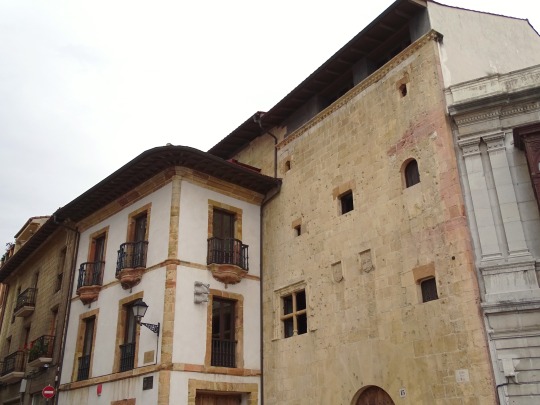






Plaza de la Catedral, Oviedo (No. 3)
The construction of the current [Oviedo Cathedral’s] façade began in the early sixteenth century under the design of Juan de Badajoz. Despite the time of construction, the Gothic style is still used instead of the Renaissance.
A low portico is built with three arches and three doors that give access to each of the naves. It is covered with an almost flat ribbed vault. The central façade, the most important both aesthetically and in size, is crowned with a relief of the Transfiguration and next to it some bas-relief figures representing Fruela I and Alfonso II the Chaste. A little further down some medallions representing the baby Jesus and Saint John child.
The doors made in the eighteenth century in walnut. The door of the central nave contains in the center of each of its leaves an image of San Salvador and Santa Eulalia de Mérida, both patrons of the cathedral and the Principality of Asturias. The temple is accessed through the door on the left.
With a height of 80 m it is divided into five bodies that decrease in size as you ascend. The tower begins integrated into the portico on the four pillars that form the arcade. It is topped with a temple formed by cylindrical towers that end in the arrow of the pinnacle.
In the tower we can find a clock on the second floor, on the top floor the shield of the bishop of Oviedo Cristóbal Rojas Sandoval who held the position at the end of the tower and in each section a window with mainel that hold braided stone otivals.
Famous tower in nineteenth-century Spanish literature because it is one of the inert protagonists of Leopoldo Alas' novel "Clarín" La Regenta. From his height and with the help of a spyglass, Don Fermín de Pas, the Magistral, watched over the city.
Source: Wikipedia
#Church of San Tirso el Real#Plaza de la Catedral#Oviedo#Uviéu#España#Cathedral Square#Oviedo Cathedral#Northern Spain#Southern Europe#Spain#Metropolitan Cathedral Basilica of the Holy Saviour#Cathedral of San Salvador#old town#tourist attraction#landmark#vacation#summer 2021#original photography#Catedral Metropolitana Basílica de San Salvador#Palacio de Valdecarzana-Heredia by Diego de Miranda#cityscape#architecture#Casa de la Rúa
8 notes
·
View notes
Text
Official announcement
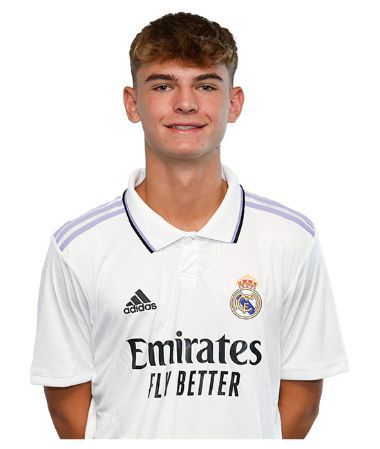
Nico Paz, David Jimenez, Cesar Palacios, Manuel Angel, Gonzalo Garcia, Diego Pineiro, Mario Camero, Raul Asencio, Jeremy Jorge, Lorenzo Aguado, Bruno Iglesias, Victor Munoz got promoted to Real Madrid Castilla.
Nico Paz is a 18 years old central midfielder. He joined Real Madrid as a youth player, 7 years ago, from CD Tenerife. He debuted in Castilla in the season 2021/2022. He already played 24 matches scored 2 goals and assisted 3 goals for the 2nd team.
David Jimenez is a 19 years old right defender, he plays in Real Madrid since the youth team.
Cesar Palacios is a 18 years old offensive midfielder, he joined Real Madrid’s Juvenil C team in 2020 from CD Numancia.
Manu Angel is a 19 years old central midfielder, he plays in Real Madrid since 2018, he joined from FC Sevilla. He already debuted in Real Madrid Castilla in the last match of the season against Algeciras CF.
Gonzalo Garcia is a 19 years old right winger, he played in Real Madrid since 2010. In 2018 he was loaned to RCD Mallorca. He debuted in Castilla already in the season 2021/2022, when he played 2 matches. Last season he also played 8 matches in Castilla and made 2 assists.
Mario Camero is a 19 years old central defender. He joined Real Madrid in 2017 from Granada CF.
Diego Pineiro is a 19 years old goalkeeper. He joined Real Madrid in 2014 from Escuela Vicalvaro. He figured in the squads of Castilla and the first team as a 3rd goalkeeper, but he didn’t play a single minute in any of the teams.
Raul Asencio is a 20 years old central defender. He joined Real Madrid in 2017 from UD Las Palmas. Last season he was "sold” to Internacional Madrid, which became Real Madrid C this season.
Jeremy Jorge is a 20 years old left winger. He joined Real Madrid in 2018 from UD Las Palmas. During his climb through the Real Madrid categories he was loaned to CD Castellon in 2021 and Albacete Balompie in 2022. Last season he was “sold” to Internacional Madrid, which became Real Madrid C this season.
Lorenzo Aguado is a 20 years old right back. He joined Real Madrid as a child. In 2021 he got promoted to Castilla, but then immediately loaned to CDA Navalcarnero. Last season he got “sold” to Internacional Madrid, which became Real Madrid C this season.
Bruno Iglesias is a 20 years old attacking midfielder. He joined Real Madrid in 2015 from Santa Marta. In 2022 he got promoted to Castilla, but after the first half of the season he got “sold” to Internacional Madrid, which became Real Madrid C this season.
Julen Jon is a 19 years old attacking midfielder. He joined Real Madrid in 2018 from Malaga CF. He spent the last season in SD Amorebieta, which got promoted to Segunda Division.
Victor Munoz is a 20 years old left forward. He joined Real Madrid in 2021 from CF Damm U19. In 2022 he got “sold” to Internacioanl Madrid, which became Real Madrid Castilla.
#Real Madrid#Real Madrid Castilla#transfer#transfers#Nico Paz#David Jimenez#Cesar Palacios#Raul Asencio#Jeremy Jorge#Lorenzo Aguado#Bruno Iglesias#Julen Jon#victor munoz#Manuel Angel#Gonzalo Garcia#Diego Pineiro#Mario Camero
1 note
·
View note
Text
The worst laid plans
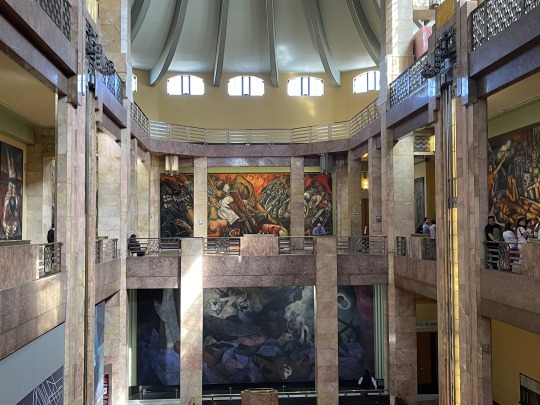
View On WordPress
1 note
·
View note
Text



08/10/2007 gerards appearance on the phone with actor diego luna at los premios on mtv palacio de los deportes mexico city mexico (text and english translation)
"Diego: Bueno.
Gerard: Bueno?
Diego: Bueno
Gerard: Hello?
Diego: bueno. Sí,
Gerard: Hello?
Diego Luna: “bueno si, estoy en el show, quien es?”
Gerard: (??)
Diego: oh Gerard?
Gerard: Hey Diego
Diego: De Miquemica Romans?
Gerard: Sí, Diego.
Diego: Qué pedo, güey
Gerard: no estás en premio?
Diego: Sí, estoy en los premios. Pero ya te dije que en la banda tributo no hay lugar para ti. Es en español. Es para Soda estéreo, güey. Más si veo a otro güey con rimel, me vomito, cabrón! Perdóname. Quédate en tu gira, güey. Allá estás. [gerard hangs up]"
english:
"Diego: Hello. (bueno over the phone means hello)
Gerard: Hello?
Diego: Hello
Gerard: Hello?
Diego: Hello! Yes
Diego: Yes. I'm on the show. Who is it?
Gerard: (??)
Diego: Oh Gerard?
Gerard: Hey Diego
Diego: From My Chemical Romance?
Gerard: Yes, Diego.
Diego: What's up, dude
Gerard: Aren't you at the awards?
Diego: Yes, I'm at the awards. But I already told you that there's no place for you in the tribute band. It's in Spanish. It's for Soda Stereo, dude. Especially if I see another guy with mascara, I'll throw up, dude! Forgive me. Stay on your tour, dude. There you are. [gerard hangs up]"
#mtv#this whole thing is precious to me#and was done to the best of my ability and google so spanish speakers lmk if somethings wrong!!#my chemical romance#mcr#2007#black parade era#los premios mtv#diego luna#mcr gifs#thank you to sawbathroom for the assist!
74 notes
·
View notes
Text
"Donde no puedas amar, no te demores"
Frida Kahlo

Magdalena Carmen Frida Kahlo, fue una pintora reconocida como un ícono pop de la cultura de México, nacida en Coyoacán, al sur de la Ciudad de México, en julio de 1907.
Fue la tercera hija del fotógrafo Guillermo Kahlo, inmigrante alemán nacionalizado mexicano, y de Matilde Calderón mexicana proveniente de Oaxaca, de madre española y padre indígena.
Después de sus dos hermanas mayores, Matilde y Adriana, nace su único hermano Guillermo, quien sobrevivió solo unos días. Después de nacer Frida, once meses después nace su hermana Cristina, quien fuera su constante compañera y la única que dejó descendencia.
La vida de Frida estuvo marcada desde muy temprana edad por el sufrimiento físico y las enfermedades. Contrajo poliomielitis a la edad de 6 años, dando inicio a una serie sucesiva de enfermedades, lesiones diversas, accidentes y operaciones.
Sus limitaciones motrices hicieron que Frida se viera muchas veces impedida de realizar actividades con otros niños, y varios de sus cuadros posteriores, reflejaron la temática de la soledad de su infancia.
Se dice que fue alumna del Colegio Alemán hasta 1921, y que allí habría obtenido su certificado escolar, aunque las actas del colegio no brindan prueba de ello.
En 1922 ingresó a la Escuela Nacional Preparatoria de la Ciudad de México, una prestigiosa institución educativa de la cual habían empezado a admitir mujeres. Frida pretendía estudiar medicina. Fue en esta escuela que Frida conoció a futuros intelectuales y artistas mexicanos como Salvador Novo.
El 17 de septiembre de 1925, Frida sufrió un grave accidente cuando un autobús en el que viajaba con su novio, fue arrollado por un tranvía. Su columna vertebral quedo fracturada en tres partes, sufriendo ademas fracturas en dos costillas, clavícula y en el hueso pélvico. Su pierna derecha se fracturó en once partes y su pie se dislocó.
La medicina de su tiempo la atormentó con por lo menos 32 operaciones a lo largo de su vida, corsés de yeso así como diversos mecanismos de estiramiento.
Fue durante su larga convalecencia, que Frida Kahlo, hizo de la pintura un papel central en su vida. Poco antes del accidente, había trabajado como aprendiz en el taller de grabado e imprenta de Fernando Fernandez Dominguez, un amigo de su padre, quien en medio del trabajo, le había enseñado a dibujar copiando grabados.
Ya como una figura artística, Frida contrajo matrimonio en agosto de 1929 con el pintor y muralista Diego Rivera, con quien viviera un circulo de amor-odio que culminó en divorcio 10 años después, para volverse a casar un año después.
Tras un autoexilio y debido a la fama y reputación de Diego Rivera en Estados Unidos, Frida y Diego vivieron de 1931 a 1934 la mayor parte del tiempo en Nueva York y Detroit. Cuando regresaron a México en 1933, Rivera tuvo un romance con la hermana menor de Frida, situación que la afectó profundamente, y dio un giro determinante en sus relaciones de pareja, y aunque llegaron a superar su desavenencias, Frida inicio otras relaciones amorosas tanto con hombres como con mujeres, que continuaron el resto de su vida.
La obra de Frida giró principalmente alrededor de su vida y su propio sufrimiento. Fue autora de 150 obras, principalmente autorretratos en los que proyectó sus dificultades para sobrevivir. Participó en importantes exposiciones colectivas en Estados Unidos y en Francia, una de sus obras fue adquirido por el Museo de Louvre. La obra de Frida Kahlo, recibió el reconocimiento internacional después de su muerte, y recibió la admiración de importantes pintores e intelectuales de la época como Pablo Picasso, Vasili Kandinski, André Breton, Marcel Duchamp, entre otros.
En 1953, en la Ciudad de México se organizó la única exposición individual durante la vida de la artista.
Frida Kahlo murió en Coyoacán en julio de 1954 a la edad de 47 años, sus restos fueron velados en el Palacio de Bellas Artes de la Ciudad de México y su cuerpo incinerado, en donde sus cenizas se conservan en “La casa azul” de Coyoacán, lugar que también la vió nacer.
Fuente Wikipedia
#pintores#frida kahlo#mexico#coyoacan#frases de pintores#artistas#frases de artistas#citas de reflexion#frases de reflexion#citas de la vida
8 notes
·
View notes
Text
Opera on YouTube 3
Il Barbiere di Siviglia (The Barber of Seville)
Mario Lanfrachi studio film, 1965 (Sesto Bruscantini, Valeria Mariconda, Ugo Benelli; conducted by Alberto Zedda; no subtitles)
Jean-Pierre Ponnelle studio film, 1974 (Hermann Prey, Teresa Berganza, Luigi Alva; conducted by Claudio Abbado; English subtitles)
New York City Opera, 1976 (Alan Titus, Beverly Sills, Henry Price; conducted by Sarah Caldwell; English subtitles)
Arena Sferisterio, 1980 (Leo Nucci, Marilyn Horne, Ernesto Palacio; conducted by Nicola Rescingo; no subtitles)
Teatro Real de Madrid, 2005 (Pietro Spagnoli, Maria Bayo, Juan Diego Flórez; conducted by Gianluigi Gelmetti; Arabic subtitles)
Teatro la Fenice, 2008 (Roberto Frontali, Rinat Shaham, Francesco Meli; conducted by Antonino Fogliani; Italian subtitles)
Royal Opera House, Covent Garden, 2009 (Pietro Spagnoli, Joyce DiDonato, Juan Diego Flórez; conducted by Antonio Pappano; English subtitles)
Vienna State Opera, 2019 (Rafael Fingerlos, Margarita Gritskova, Juan Diego Flórez; conducted by Evelino Pidó; English subtitles)
Arena di Verona, 2022 (Leo Nucci, Nino Machaidze, Dmitry Korchak; conducted by Daniel Oren; English subtitles)
Garsington Opera, 2023 (Johannes Kamler, Katie Bray, Andrew Stenson; conducted by Douglas Boyd; English subtitles)
Rigoletto
Wolfgang Nagel studio film, 1977 (Rolando Panerai, Franco Bonisolli, Margherita Rinaldi; conducted by Francesco Molinari-Pradelli; Japanese subtitles)
Metropolitan Opera, 1977 (Cornell MacNeil, Plácido Domingo, Ileana Cotrubas; conducted by James Levine; no subtitles)
Metropolitan Opera, 1981 (Cornell MacNeil, Luciano Pavarotti, Christiane Eda-Pierre; conducted by James Levine; no subtitles)
Jean-Pierre Ponnelle film, 1982 (Ingvar Wixell, Luciano Pavarotti, Edita Gruberova; conducted by Riccardo Chailly, English subtitles)
English National Opera, 1982 (John Rawnsley, Arthur Davies, Marie McLaughlin; conducted by Mark Elder, sung in English)
La Monnaie, Brussels, 1999 (Anthony Michaels-Moore, Marcelo Álvarez, Elizabeth Futral; conducted by Vladimir Jurowski; no subtitles)
Arena di Verona, 2001 (Leo Nucci, Aquiles Machado, Inva Mula; conducted by Marcello Viotti; Italian subtitles)
Zürich Opera house, 2006 (Leo Nucci, Piotr Beczala, Elena Mosuc; conducted by Nello Santi; no subtitles)
Paris Opera, 2016 (Quinn Kelsey, Michael Fabiano, Olga Peretyatko; conducted by Nicola Luisotti; English subtitles)
Teatro Massimo, 2018 (George Petean, Ivan Ayon Rivas, Grazia Schiavo; conducted by Stefano Ranzani; English subtitles)
Così Fan Tutte
Vaclav Kaslik studio film, 1969 (Gundula Janowitz, Christa Ludwig, Luigi Alva, Hermann Prey; conducted by Karl Böhm; English subtitles)
Jean-Pierre Ponnelle studio film, 1988 (Edita Gruberova, Delores Ziegler, Luis Lima, Ferruccio Furlanetto; conducted by Nikolaus Harnoncourt; English subtitles) – Act I, Act II
Teatro alla Scala, 1989 (Daniela Dessì, Delores Ziegler, Josef Kundlak, Alessandro Corbelli; conducted by Riccardo Muti; Italian subtitles) – Act I, Act II
Théâtre du Châtelet, 1992 (Amanda Roocroft, Rosa Mannion, Rainer Trost, Rodney Gilfry; conducted by John Eliot Gardiner; English subtitles)
Vienna State Opera, 1996 (Barbara Frittoli, Angelika Kirschlager, Michael Schade, Bo Skovhus; conducted by Riccardo Muti; English and Italian subtitles)
Teatro Comunale di Ferrara, 2000 (Melanie Diener, Anna Caterina Antonacci, Charles Workman, Nicola Ulivieri; conducted by Claudio Abbado; no subtitles)
Zürich Opera House, 2000 (Cecilia Bartoli, Liliana Nikiteanu, Roberto Saccá, Oliver Widmer; conducted by Nikolaus Harnoncourt; no subtitles) – Act I, Act II
Opera Lyon, 2007 (Maria Bengtsson, Tove Dahlberg, Daniel Behle, Vito Priante; conducted by Stefano Montanari; French subtitles)
Salzburg Festival, 2009 (Miah Persson, Isabel Leonard, Topi Lehtipuu, Florian Boesch; conducted by Adam Fischer; English subtitles)
Zürich Opera House, 2009 (Malin Hartelius, Anna Bonitatibus, Javier Camarena, Ruben Drole; conducted by Frans Welser-Möst; English subtitles)
Aïda
San Francisco Opera, 1981 (Margaret Price, Luciano Pavarotti; conducted by Luis Garcia Navarro; no subtitles)
Metropolitan Opera, 1985 (Leontyne Price, James McCracken; conducted by James Levine; English subtitles) – Act I, Act II, Act III, Act IV
Teatro alla Scala, 1986 (Maria Chiara, Luciano Pavarotti; conducted by Lorin Maazel; English subtitles)
Metropolitan Opera, 1989 (Aprile Millo, Plácido Domingo; conducted by James Levine; English subtitles)
Teatro Comunale di Busseto, 2001 (Adina Aaron, Scott Piper; conducted by Massimiliano Stefaneli; Italian subtitles)
St. Margarethen Opera Festival, 2004 (Eszter Szümegi, Konstantin Andreev; conducted by Ernst Marzendorfer; English subtitles)
Metropolitan Opera, 2012 (Liudmyla Monastyrska, Roberto Alagna; conducted by Fabio Luisi; Russian subtitles)
Tbisili State Opera, 2017 (Maqvala Aspanidze, Franco Tenelli; conducted by Marco Boemi; Russian subtitles)
Teatro Colón, 2018 (Latonia Moore, Riccardo Massi; conducted by Carlos Vieu; Spanish subtitles)
Teatro la Fenice, 2019 (Roberta Mantegna, Francesco Meli; conducted by Riccardo Frizza; French subtitles)
#opera#youtube#complete performances#il barbiere di siviglia#rigoletto#così fan tutte#aida#gioachino rossini#giuseppe verdi#wolfgang amadeus mozart
20 notes
·
View notes
Text
I don’t feel like our love is brand new. There must have been lovers, soulmates, before us, experiencing what we get to have. And it’s giving me comfort to imagine there will be many more like us to come. Our kind of love is the kind of love that makes this rotten world worth living in.
prince simon in madrid
a pilgrimage along the world that @prince-simon created 🥹

Simon’s neighbourhood, Chueca
“It’s actually the Queer Neighbourhood of Madrid, and coincidentally also where I live.” He lowered his voice as if to tell a secret, “It’s actually not a coincidence at all.” (chapter 2)

Casa de Campo (view from the Royal Palace lol oop)
Wilhelm didn’t even recognise himself. He didn’t think he’d ever looked that happy. And Simon… his eyes were closed and his curls were a mess and Wilhelm had never seen anyone more beautiful. (chapter 3)

El Retiro
Simon looked at Wilhelm much too adoringly for a statement this goofy. “The ducks are gay!” He yelled at Santiago and Paula, “Just so you know!” (chapter 9)
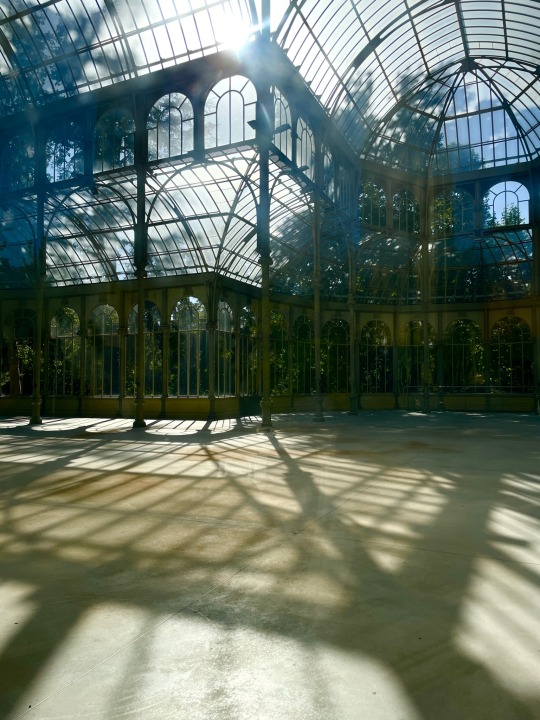
Palacio de Cristal
“Here’s a funny thought - bear with me, okay? But just imagine. Flowers. Everywhere, like on the ceiling, up the walls. Fairy lights scattered all through it. It would be so gorgeous as a- uh, like. For a wedding…” Realising where his train of thought had gotten him, Wilhelm fell quiet, looking at Simon with wide eyes. (chapter 9)

El Palacio Real de Madrid (more specifically the Throne Room lmfao)
Simon traced his fingers over the bruises on Wilhelm’s neck and in the opening of his dress shirt, humming contentedly. Wilhelm followed the movement in the mirror, and marvelled at how good they looked together, how well they fit together and how much Simon belonged right here – on the throne, with Wilhelm. He deserved the world and so much more. (chapter 12)
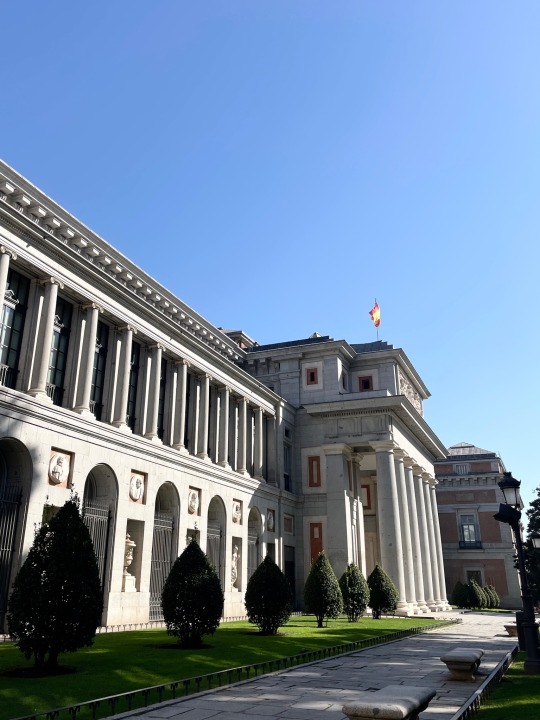
Museo Nacional del Prado
Around them, the other visitors kept moving, admiring the art on the walls, and for the moment Wilhelm felt infinite, imagining himself a painting, looked at and analysed hundreds of years from now. El Abrazo de los Príncipes.
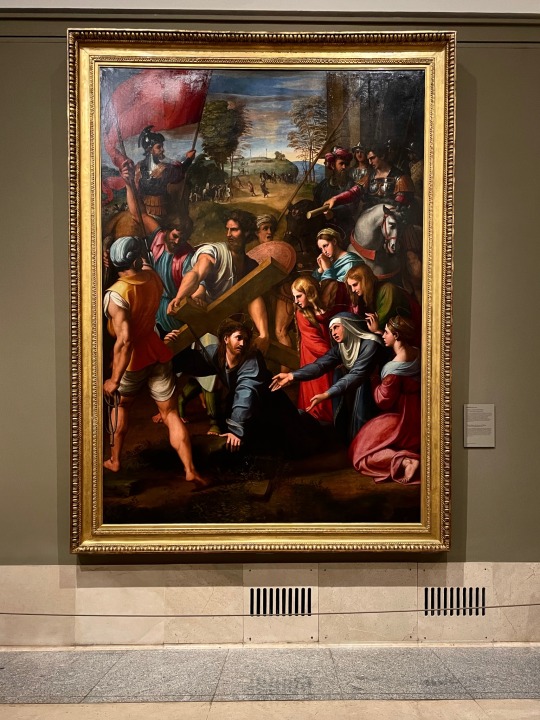
Lo Spasimo, Raphael, 1515-1517
“Are we allowed to kiss in front of Jesus on his way to crucifixion or is that tasteless? Because I really want to kiss you right now, Simon.”
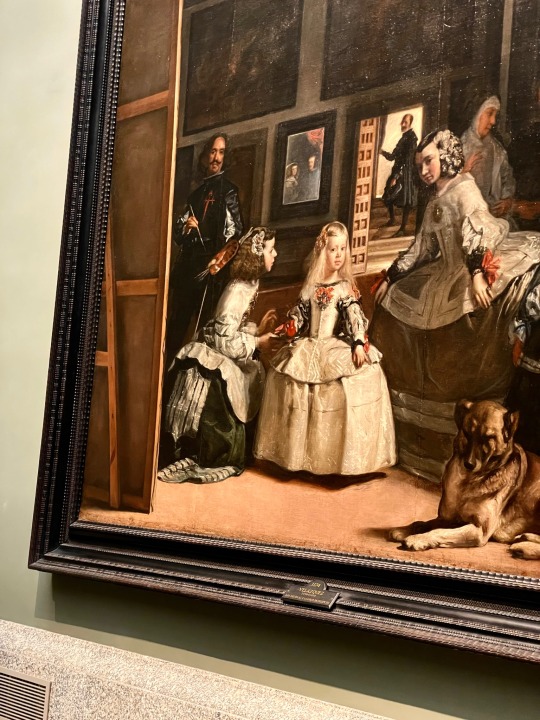
Las Meninas, Diego Velázquez, 1656
“He made me look at Velázquez in the painting and how he was looking back at the viewer, at me. I still remember the exact tone of his voice, how he was so certain when he told me that I had every right to be where I am. That I am the subject of this painting, the king being painted. All those tyrants, King Felipe and Emmanuel and all those that came in between, they are trapped in that mirror forever while I am here, alive, we’re here. Velázquez is looking at two queer princes, ready to paint us.” (chapter 13)
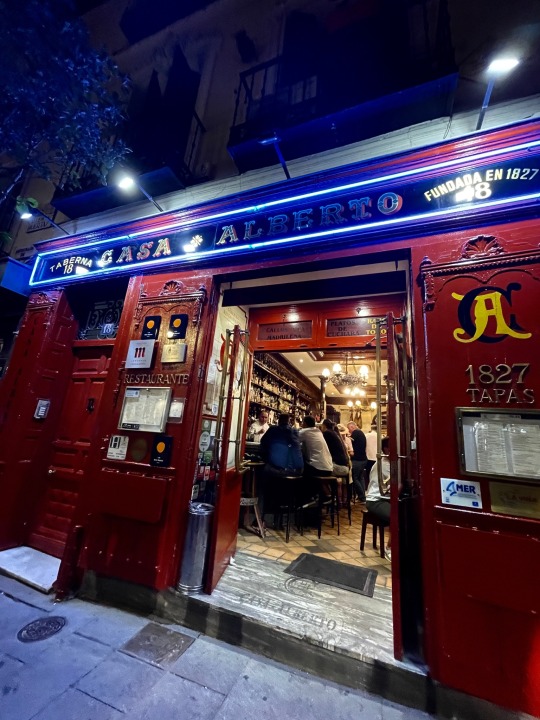
Casa Alberto
“So, tell me more about this special part of Madrileñan history.” He was slightly teasing but mostly actually curious.
Simon seemed all too eager to answer that question, and it hit Wilhelm how genuine Simon’s care for his city — his country — and its people was. It made him a little sad to know that a lot of people didn’t get to see that because they only focused on Simon being too gay or too Latino, or even just too carefree and enjoying life because he was young, to be their future king.
bonus content:
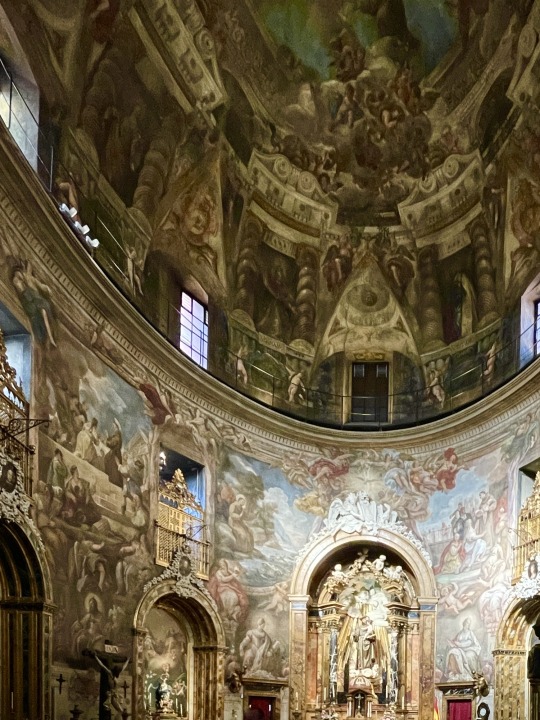
Iglesia de San Antonio de los Alemanes (where Simon goes to church)
“I think I need to go somewhere.”
“Oh?” Wilhelm said softly, “Right now?”
Simon hesitated before he nodded. “I need to- get some clarity? Or - I hope that I’ll get it there?” He whispered, voice shaky.
“Do you want to tell me where you’re going?”
“To- uh, to pray? I mean- to church? I don’t know if I’ll pray…” Simon’s voice was shaky, uncertainty shining in his eyes when he dared to look up at Wilhelm. (chapter 11)
#god i don’t think i have immerse myself into a fictional world so deeply before#this story lives and breathes#and i love what it has given me god to imagine when i read the first chapter i have not moved countries or gotten a cursed degree yet#he feels like a friend i held by the hand and walked through adventures together🥹#i really went to a particular restaurant and ordered particular dishes because i read about it in a book#and it was as magical as i imagined heheh#(including the snails sksksk)#prince simon i love you forever#prince simon au#prescribing everyone a reread Right Now!#give me attention and i’ll come back with extra pics of the food sksk#simon’s depression church is not mentioned in Text but this is canon source hehe#i’m not the first person to visit pscu locations and i love everyone who’s done it what a great idea it was so fun!#yes i know you’re not supposed to take photos in the prado but then i remembered this was built by a colonial powerhouse then felt less bad
48 notes
·
View notes
Note
diego aonde fica as naves das Diamonds?? como o palacio eh diferente da serie original as naves nao ficam estacionadas emcima de cada torre
Elas ficam dentro das torres
25 notes
·
View notes
Text
" Nos contaban con mucha seguridad el significado y la historia de cada estancia del palacio, y la forma en que fue restaurado en relación con el edificio anterior, pero hacían prodigios de evasivas y circunloquios para no referirse al 11 de setiembre de 1973. La verdad es que la restauración se hizo con una gran fidelidad a los planos originales. Tapiaron unas puertas, abrieron otras, derribaron muros, cambiaron tabiques de lugar, y eliminaron la entrada de Morandé 80, por donde los presidentes recibían las visitas privadas. Fueron tantos los cambios, que alguien que hubiera conocido el palacio antiguo no sabría orientarse en el nuevo. Los oficiales que nos atendían pasaron un mal rato cuando les pedimos mostrarnos el original del Acta de Independencia que estuvo expuesto durante años en la sala del Consejo de Ministros, y que sabíamos destruido en el bombardeo. Nunca lo admitieron, sino que prometían conseguirnos más tarde un permiso especial para filmarlo, y siempre más tarde y más tarde, hasta que terminamos la filmación. Tampoco pudieron decirnos dónde estaba el escritorio de don Diego Portales, y tantas reliquias que los presidentes anteriores habían ido dejando a lo largo de los años, para un pequeño museo histórico que fue arrasado por las llamas. Tal vez los bustos de todos los presidentes desde O’Higgins corrieron la misma suerte, aunque es corriente la versión de que el gobierno militar los retiró de la galería donde estuvieron siempre para no verse forzados a poner también el de Salvador Allende. En general, la impresión que se tiene después del recorrido completo del palacio, es que todo se ha cambiado a fondo con el propósito único de borrar hasta el último vestigio del presidente asesinado. "
Gabriel García Márquez, La aventura de Miguel Littín clandestino en Chile, edición Debolsillo (Contemporánea), 2012³; pp. 173-174.
[ 1ª edición: Editorial Oveja Negra, Bogotá, Colombia, 1986 ]
#Chile#América Latina#democracia#guerra sucia#libertad#Gabriel García Márquez#resistencia#Salvador Allende#CIA#La aventura de Miguel Littín clandestino en Chile#Guerra Fría#11 de septiembre de 1973#dictadura militar#siglo XX#exilio#terrorismo de Estado#Plan Cóndor#Unidad Popular#historia#Violaciones de los Derechos Humanos#socialismo#Kissinger#caravana de la muerte#Richard Nixon#Palacio de La Moneda#dictaduras latinoamericanas#crímenes de Estado#O’Higgins#Estados Unidos#Augusto Pinochet
26 notes
·
View notes
Photo
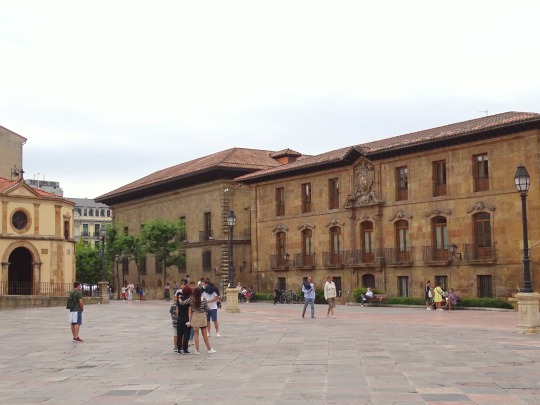

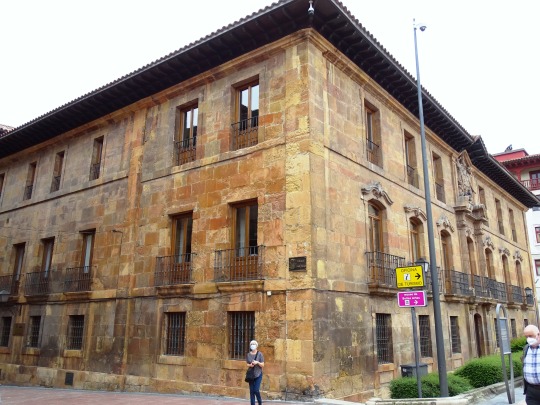
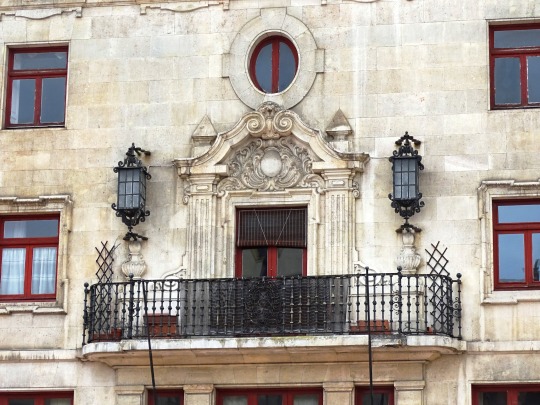


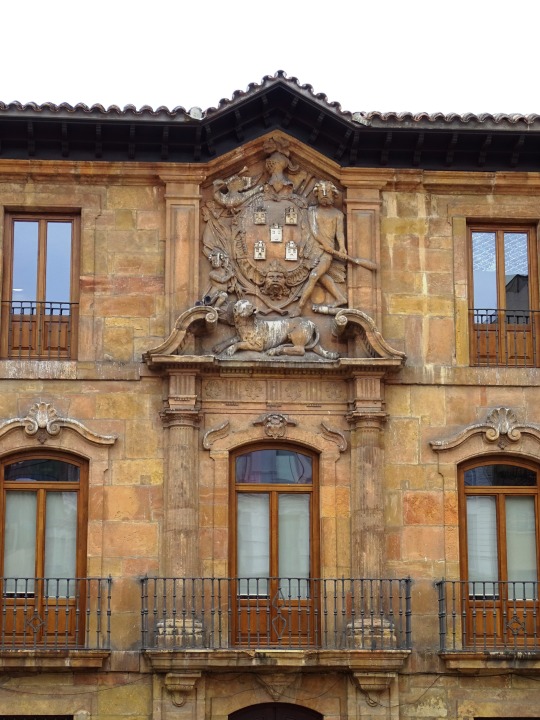
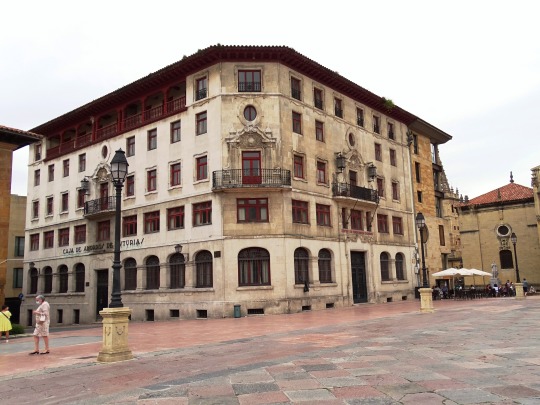
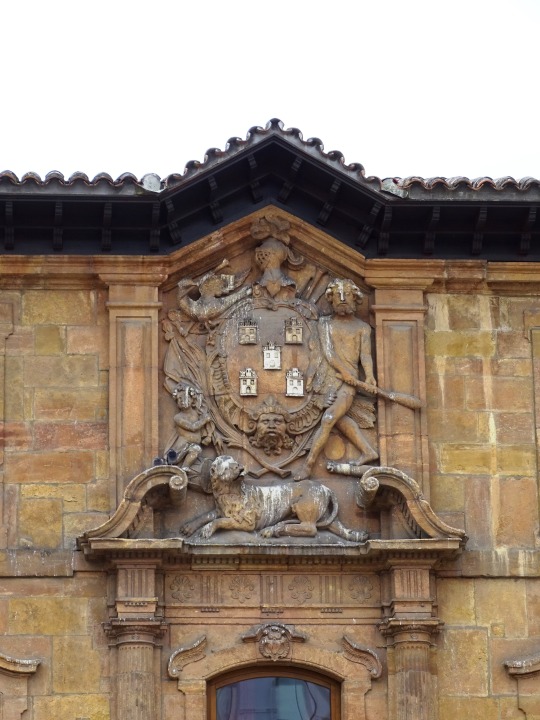

Plaza de la Catedral, Oviedo (No. 1)
The palace of Valdecarzana-Heredia is located in the city of Oviedo, capital of the Principality of Asturias (Spain). It is a large urban palatial residence.
The palace was built between 1627-1629 by Diego de Miranda. The Miranda family was one of the great lineages of the Principality of Asturias. Lineage, who like other nobles established in the city of Oviedo, built between the XVII-XVIII centuries a palace in which to reside with dignity, according to their social condition and economic and political power. The house occupied a privileged situation, in the vicinity of the Cathedral. In its realization seem to have participated the masters Juan de Naveda, and Gonzalo Güemes Bracamonte.
Typologically the palace is the work of the first Asturian Baroque, of classicist inspiration. It follows the model of the free-standing palaces and cubic plan structured around a large central courtyard. Its western façade, of good stonework, was flanked by two towers, of four floors, of which only the northwest remains. It is a very sober and unornamented façade. Lines of impost delimit its three floors and two bands of ashlars separate its central body from the tower and the southwest wing that was built by the Heredia family. Two cajeadas pilasters frame the cover, on which runs a decorative frieze of rosaceas and a balcony, which gives way to the shield of the Miranda with the crown of the marquisate of Valdecarzana. The eastern canvas of the palace also shows a stonemasonry factory and houses, on the second floor, the arms of the Miranda and Ponce de León. The north façade is made of plastered masonry.
At the end of the eighteenth century, the Heredia family reformed the palace and its courtyard and endowed it with its current southern façade, demolishing the tower on that side, and a garden, to which it gave said façade. The project of these works was carried out by the Asturian architect Manuel Reguera González, although its final execution is not due to him.
Of unornamented and academic baroque style, the central street is the compositional and decorative axis of this southern façade, which is organized, like the western one, in three separate floors with impost lines. The ground floor houses the entrance door, with a lowered arch, between pilasters with a cushioned box. On the first floor, the main balcony opens, framed by two semi-columns of Doric order. On them rests a broken entablature, with classic decorative frieze. A pediment split by volutes, already on the upper floor, acts as the base of the shield, which breaks the line of the cornice. The Heredia shield shows Hercules fighting with the Nemean lion and a figurehead, with the inscription, as a diadem, of the year 1774. The seven balconies that open in the main courtyard are of lowered arch and present artistic and molded finials, with veneras and masks.
Source: Wikipedia
#Palacio de Valdecarzana-Heredia#Capilla de la Balesquida#Plaza de la Catedral#Diego de Miranda#architecture#Uviéu#Oviedo#Asturias#Northern Spain#España#Spain#summer 2021#original photography#old town#tourist attraction#landmark#travel#vacation#Southern Europe#Cathedral Square#exterior#detail#cityscape
6 notes
·
View notes
Text

Flores silvestres de Francesco Gioli (San Frediano a Settimo di Cascina, Pisa 1846 – Florencia, 1922)
Descripción Fecha: 1896 Museo: Palazzo Pitti Recopilación: Galería de Arte Moderno Técnica: Óleo sobre lienzo Dimensiones: 152x76.8 cm Inventario: Génesis 313; Depósito 110
La obra fue presentada en 1896 en la exposición florentina titulada Festa dell'arte e dei fiore. La forma en que Gioli abordó el tema, combinando sentimientos de prosperidad materna con el fértil despertar de la naturaleza en primavera, fue entendida y apreciada por la mayoría de los críticos de la época. El resto de comentarios convirtieron estas peculiaridades en negativas, definiendo este trabajo como "monótono y demasiado moderado". Gioli eligió un formato inusual para este tema y utilizó la línea diagonal no sólo para realzar el movimiento ascendente de los personajes, sino también para acercar la mirada del observador al juego dinámico entre madre e hijos. Siguiendo el trazado del camino, el grupo familiar finaliza con una cuarta figura, una niña pequeña no muy lejos, ocupada recogiendo unos manojos de retama exuberante. Gioli relata con gran detalle estos fragmentos de la vida cotidiana, estudiando los colores de la ropa, equilibrando los tonos, animando el contexto en el que se mueven los personajes. Las retamas y las margaritas, a medida que la vegetación se espesa, se transforman de manchas de color en puntos de luz. Al mismo tiempo, sobre el cielo variable, destacan las siluetas sombrías de los árboles, testigos silenciosos del alegre paso de la familia. Esta pintura es la ejemplificación del período de madurez de Gioli, cuando su adhesión al movimiento Macchiaioli era completa. Además de frecuentar el grupo de artistas - tanto en Florencia como en Castiglioncello, en casa de Diego Martelli (1839-1896) -, la estancia de Gioli en París en 1875 con Giovanni Fattori (1825-1908), Egisto Ferroni (1835-1912) y Niccolò Cannicci (1846.1906). El debut de Gioli, sin embargo, fue muy diferente. Su formación fue académica y sus primeros trabajos se centraron en temas queridos por el romanticismo histórico. Su capacidad artística fue inmediatamente apreciada, aunque lejos del espíritu vivaz ejemplificado en este cuadro. Sin embargo, es precisamente gracias a esa fructífera educación que su paso por Macchiaioli tuvo un impacto tan incisivo. El artista cambió de género, perfeccionó su técnica, se comparó con colegas italianos y extranjeros, pero sin olvidar nunca las importantes lecciones aprendidas de los maestros: Annibale Marianini (1814-1863) en la Academia de Pisa, Antonio Ciseri (1821-1891) y Enrico Pollastrini (1817-1876) en el florentino. Comprado por Umberto I el mismo año de su ejecución, el cuadro fue posteriormente donado a la Galería de Arte Moderno del Palacio Pitti, lugar designado para albergar la naciente colección de obras de arte contemporáneo. Texto por Graziella Cirri
Información de la web de la Gallerie degli Uffizi, fotografía de mi autoría.
2 notes
·
View notes
Text
Columbus Crew: 2023 MLS Cup Champions
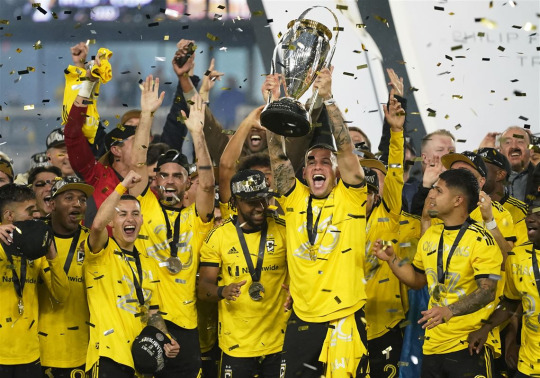
COLUMBUS, Ohio – Columbus Crew have turned their bold, possession-centric style into the league's ultimate prize, capturing MLS Cup 2023 presented by Audi with a 2-1 win over LAFC.
Head coach Wilfried Nancy's team produced a masterclass performance Saturday at rain-soaked Lower.com Field, resulting in the Eastern Conference club's third-ever MLS Cup after their 2008 and 2020 squads also entered the history books as champions.
First-half goals from Cucho Hernández (33') and Yaw Yeboah (37') gave Columbus a cushion to absorb a Dénis Bouanga (74') lifeline, denying LAFC's MLS Cup repeat quest. In the process, head coach Wilfried Nancy's group has climbed the 29-team mountaintop that began with MLS is Back weekend on Feb. 25.
Before raising the Philip F. Anschutz Trophy, Columbus pulled ahead through Cucho's authoritative penalty kick – helping him earn MLS Cup MVP presented by Audi honors and finish with an Audi MLS Cup Playoffs co-leading five goals. That opportunity arose when referee Armando Villarreal pointed to the spot, judging LAFC defender Diego Palacios to have handled a flicked-up touch from Diego Rossi.
The Crew, the league's highest-scoring team in 2023, quickly doubled their advantage when Yeboah capped an 11-pass buildup. The Crew's left wingback was on the receiving end of Malte Amundsen's line-splitting through ball, then sliced home an outside-the-foot finish past goalkeeper Maxime Crépeau.
But, as was so often the case in 2023, Bouanga would not be silenced. The Best XI forward slipped a second-effort shot past goalkeeper Patrick Schulte, drawing him level with teammate Carlos Vela for the most calendar-year goals (38) in MLS across all competitions (Vela's MVP-winning 2019).
The Black & Gold's late push fizzled out, though. And the hosts, after seven minutes of second-half stoppage time, were left dancing as champions.
Goals 33' - CLB - Cucho Hernández 37' - CLB - Yaw Yeboah 74' - LAFC - Dénis Bouanga
Three Things THE BIG PICTURE: Four years ago, only 1,500 fans watched Columbus beat Seattle Sounders FC for the MLS Cup 2020 trophy – a necessity at Historic Crew Stadium amid the COVID-19 pandemic. Now, 20,802 fans flooded to the club's new state-of-the-art venue for an unforgettable night. Factor in how last year Columbus compensated CF Montréal to extract Nancy as head coach and the club's rise is even more memorable. LAFC? They lost their third final of the year and got a cold reminder of how hard it is to repeat, something not accomplished since the 2011-12 LA Galaxy.
MOMENT OF THE MATCH: Yeboah's goal was champagne football in motion. What a ball from Amundsen.
MAN OF THE MATCH: Cucho! The MLS Cup MVP crowned a spectacular year and is forever a Crew legend.
Next Up CLB: End of 2023 season LAFC: End of 2023 season
9 notes
·
View notes
